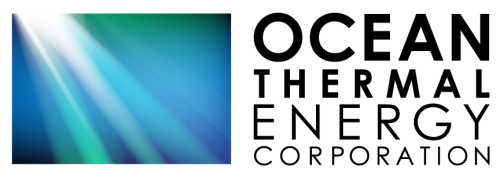COMMERCIALIZATION
In 2009, the National Oceanic and Atmospheric Administration (NOAA), the National Ocean Service (NOS) and the Office of Ocean and Coastal Resource Management (OCRM) issued a report providing a qualitative analysis of the technical readiness of seven key components of OTEC technology: cold water pipe, platform/pipe interface, heat exchangers, platform, pumps and turbines, power cable, and platform mooring.
The report served as a resource for NOAA OCRM and governmental decision-makers, as well as the OTEC community to summarize the current state of technical readiness and identify key research needs.
The Workshop concluded:
Ocean Thermal Energy Corporation (OTE) is advanced with its stated mission of commercializing OTEC technology. OTE’s engineers participated in the design and construction of a working R&D plant at the Natural Energy Laboratory of Hawaii Authority (NELHA). Additionally, OTE has prepared multiple technical feasibility studies and system designs for the US Government and private customers. Thousands of peer-reviewed studies describing the merits of OTEC technology have been published by Company Scientists and Engineers.
OCEES International, Inc is a wholly owned subsidiary of OTE and has 21 years of experience in the research and design of OTEC systems.
OCEES has also been awarded Small Business Innovation Research (SBIR) credentials with the US Government. Under the SBIR program rules, a contract for an OTEC power system may be expedited. OCEES has already completed OTEC feasibility studies and technology application designs (phase 1 and 2). With appropriate technical review, phase 3 allows a contract for a commercial-grade OTEC system to be issued.
OCEES engineers and technical consultants have been involved in OTEC research for many years:
- First net power generation achieved by Mini-OTEC in Hawaii in 1979 (18 kW net)
- Japanese demonstrated land-based net production in 1981 in Nauru (31.5 kW net)
- OTEC research and demonstration in Hawaii from 1983 – 1999 (resulting in the largest net power-producing OTEC system to date – 50 kW net at the Natural Energy Laboratory Hawaii - NELHA)
- Three cold water pipes providing continuous service to NELHA tenants (oldest since 1987). These tenants utilize the water from the OTEC pipeline systems that pump nutrient-rich deep and surface seawater to shore 24/7
- NELHA tenants are involved in water bottling, fish farming and shellfish farming and generate about $30-40 million per year in total economic impact, including tax revenues, over 200 jobs, construction activity and high-value product exports (http://www.nelha.org/tenants/
commercial.html) - OTEC pipes in Hawaii have survived category 4 hurricanes and 6.9 earthquake within 8 miles of epicenter
- Recent technology enhancements to the Rankine Cycle (OTEC power cycle), have made the production of OTEC power even more efficient and cost-effective
- OCEES has been a part of many different OTEC Development Teams, including one with Lockheed Martin and other technical engineering companies:
After many years of R&D, Ocean Thermal Energy Conversion (OTEC) technology is finally ready for large-scale commercialization.


